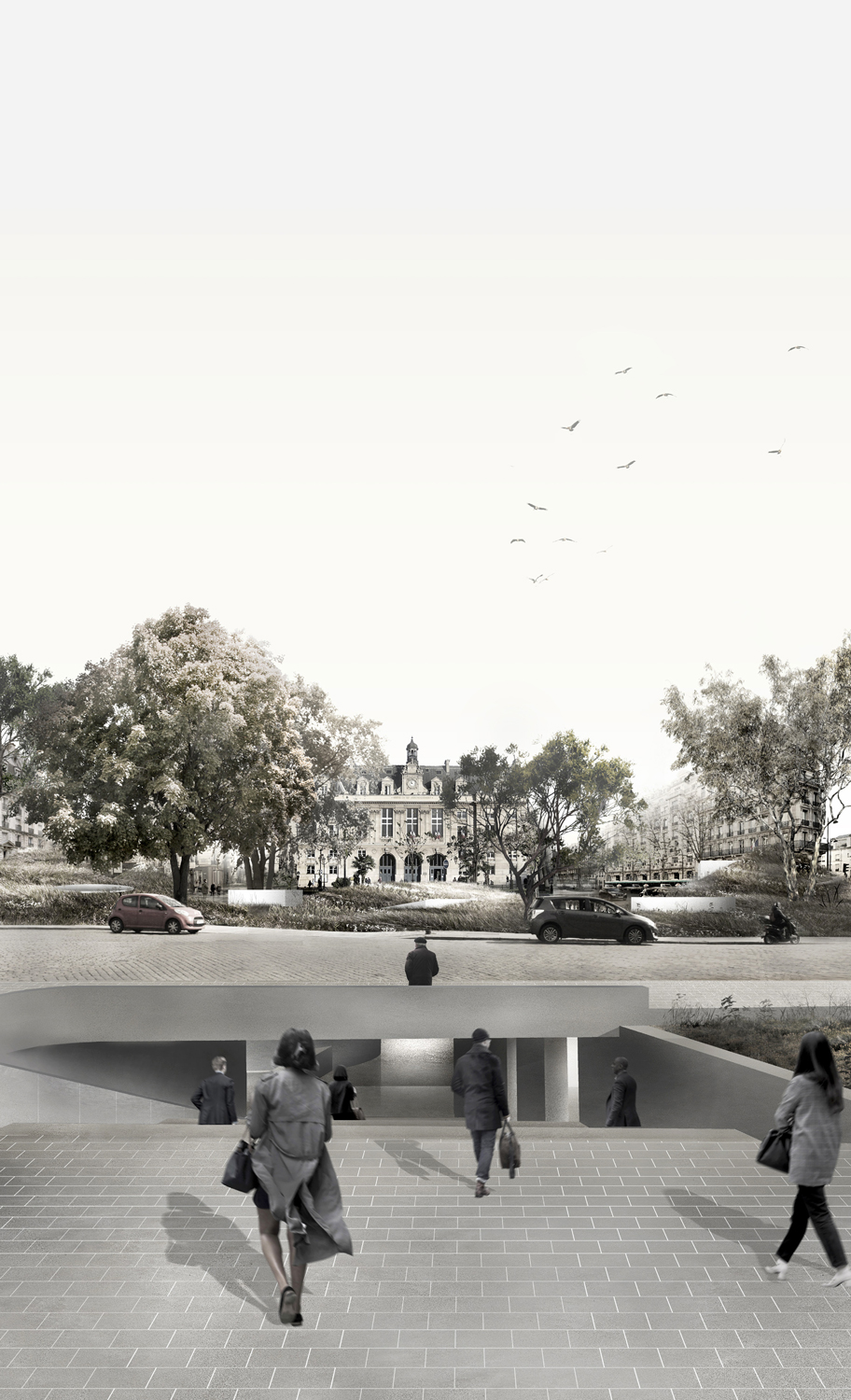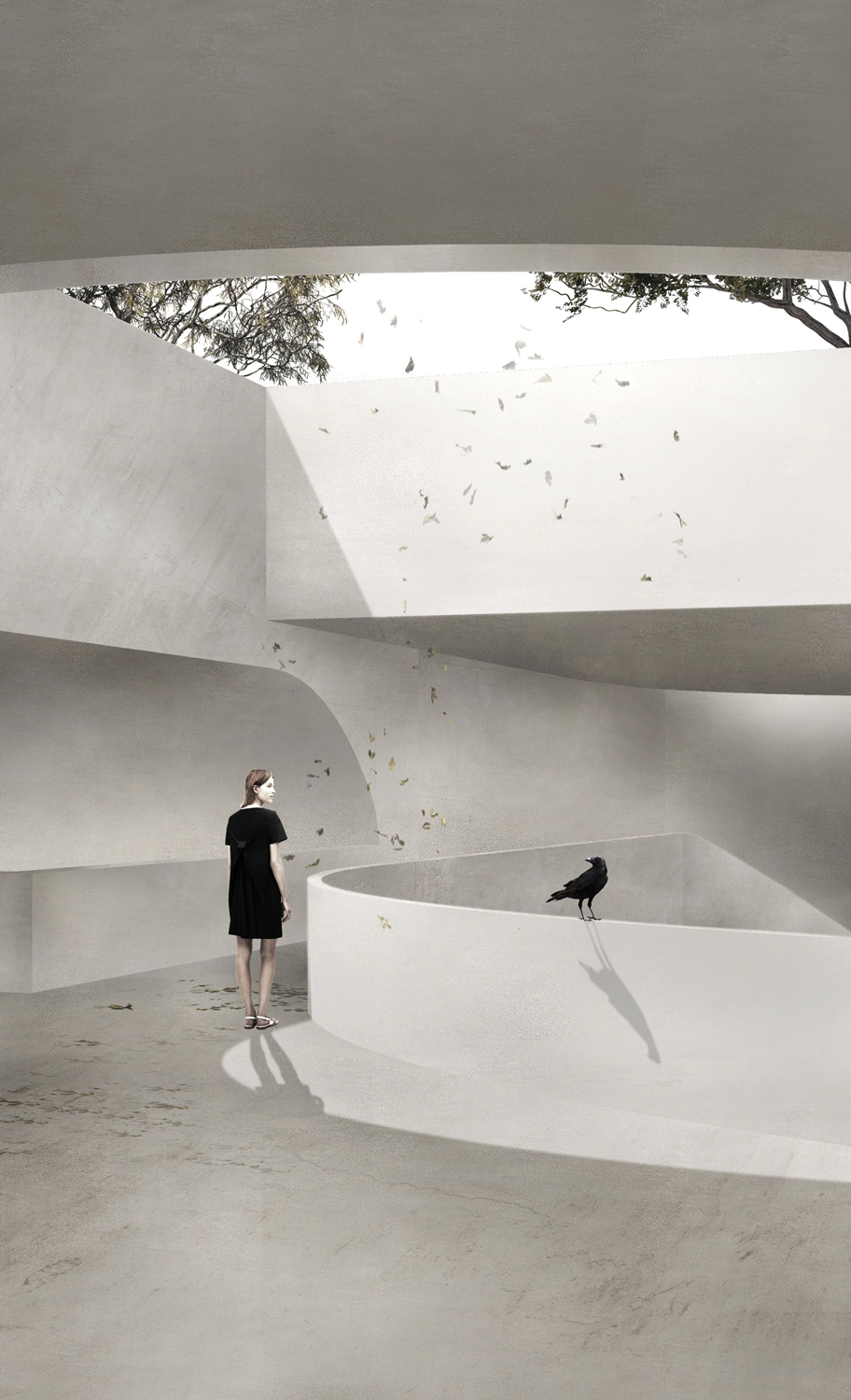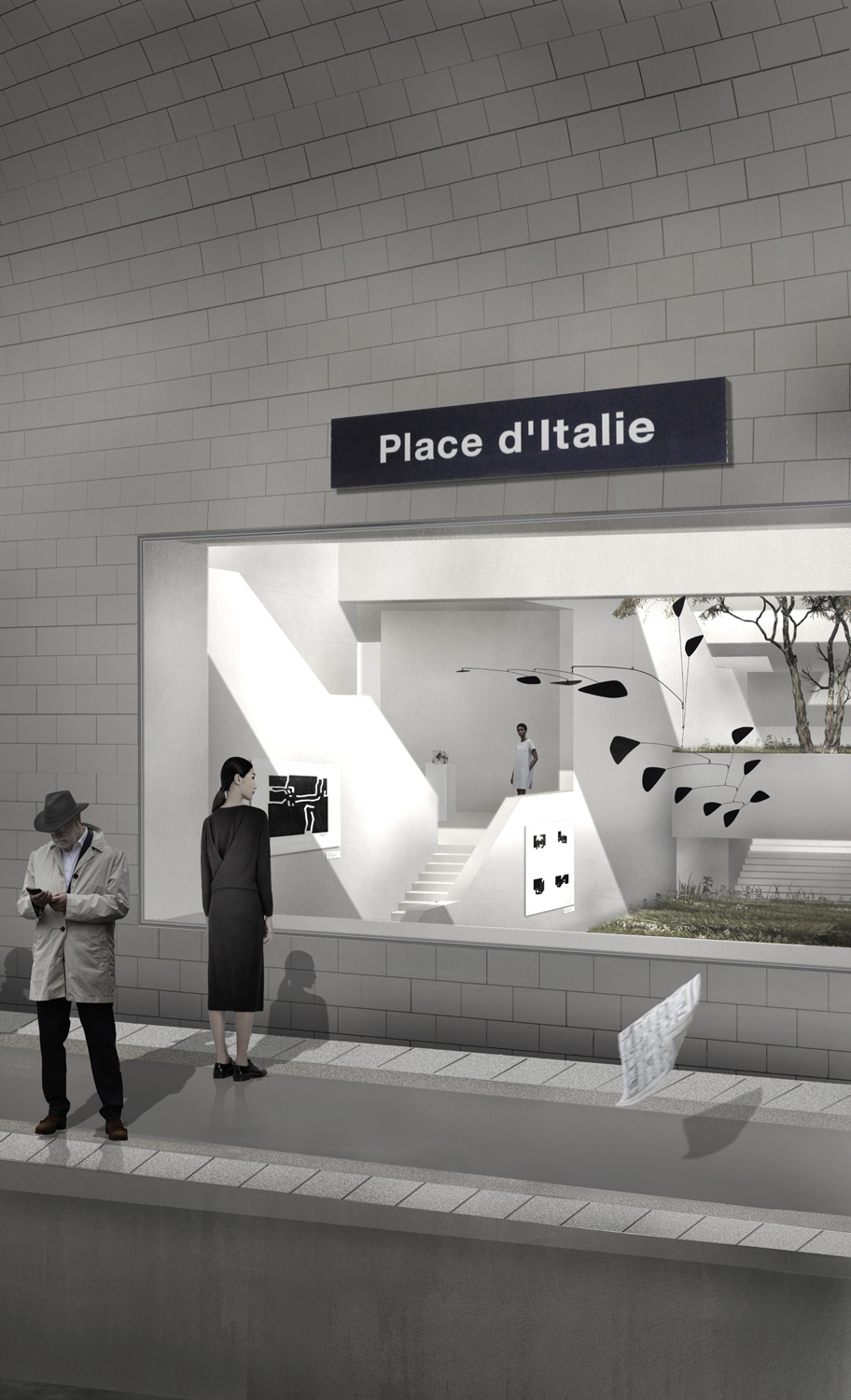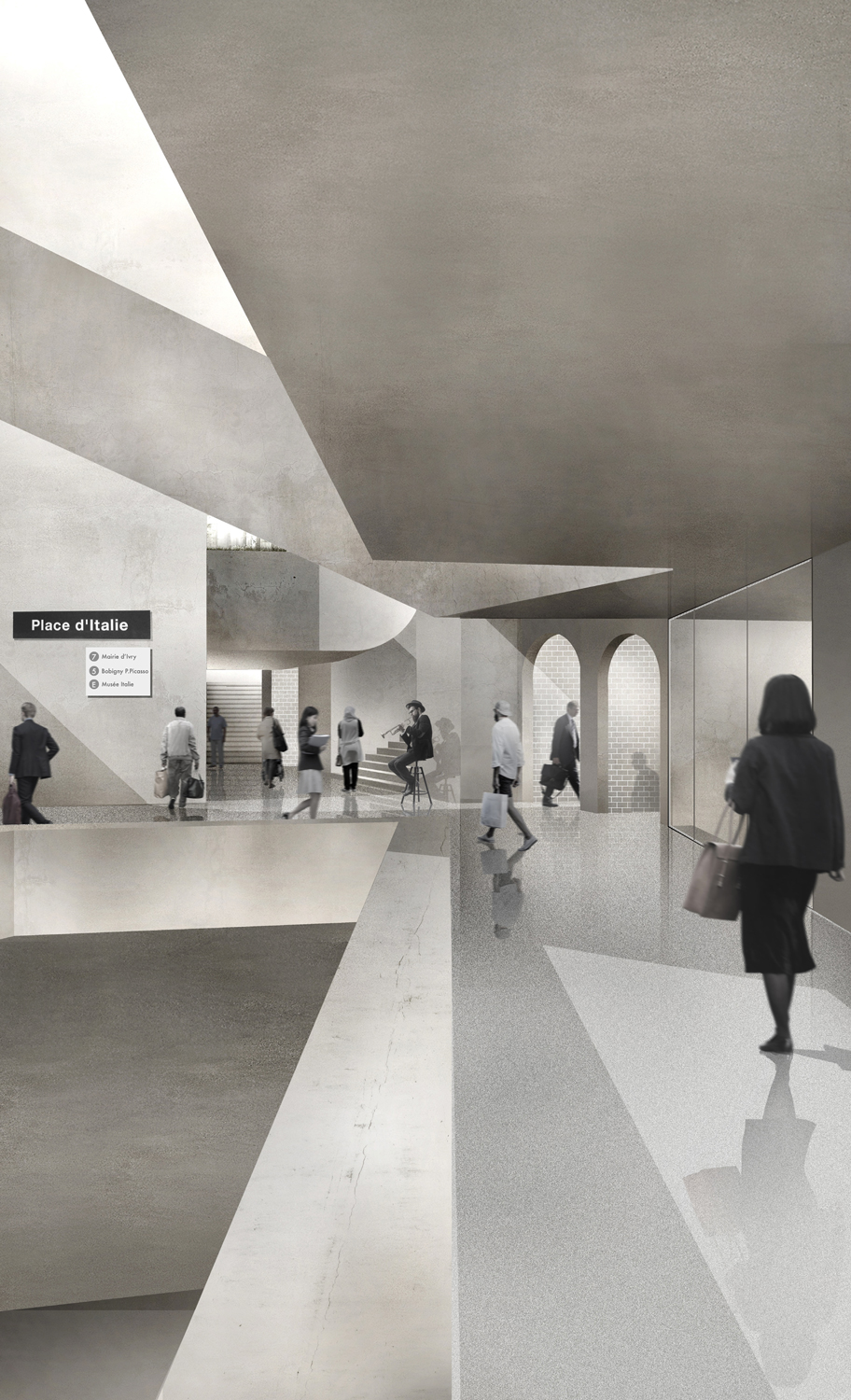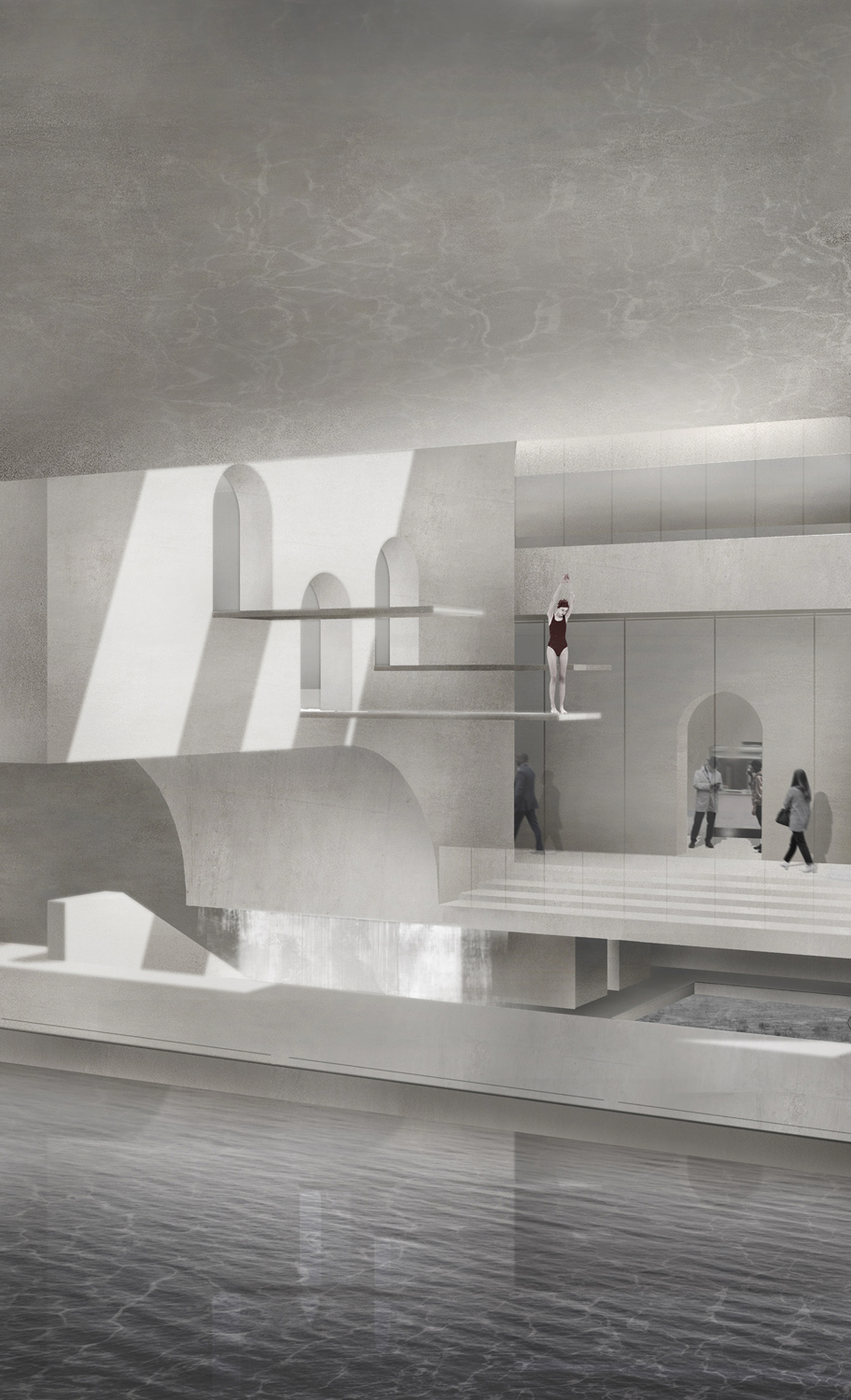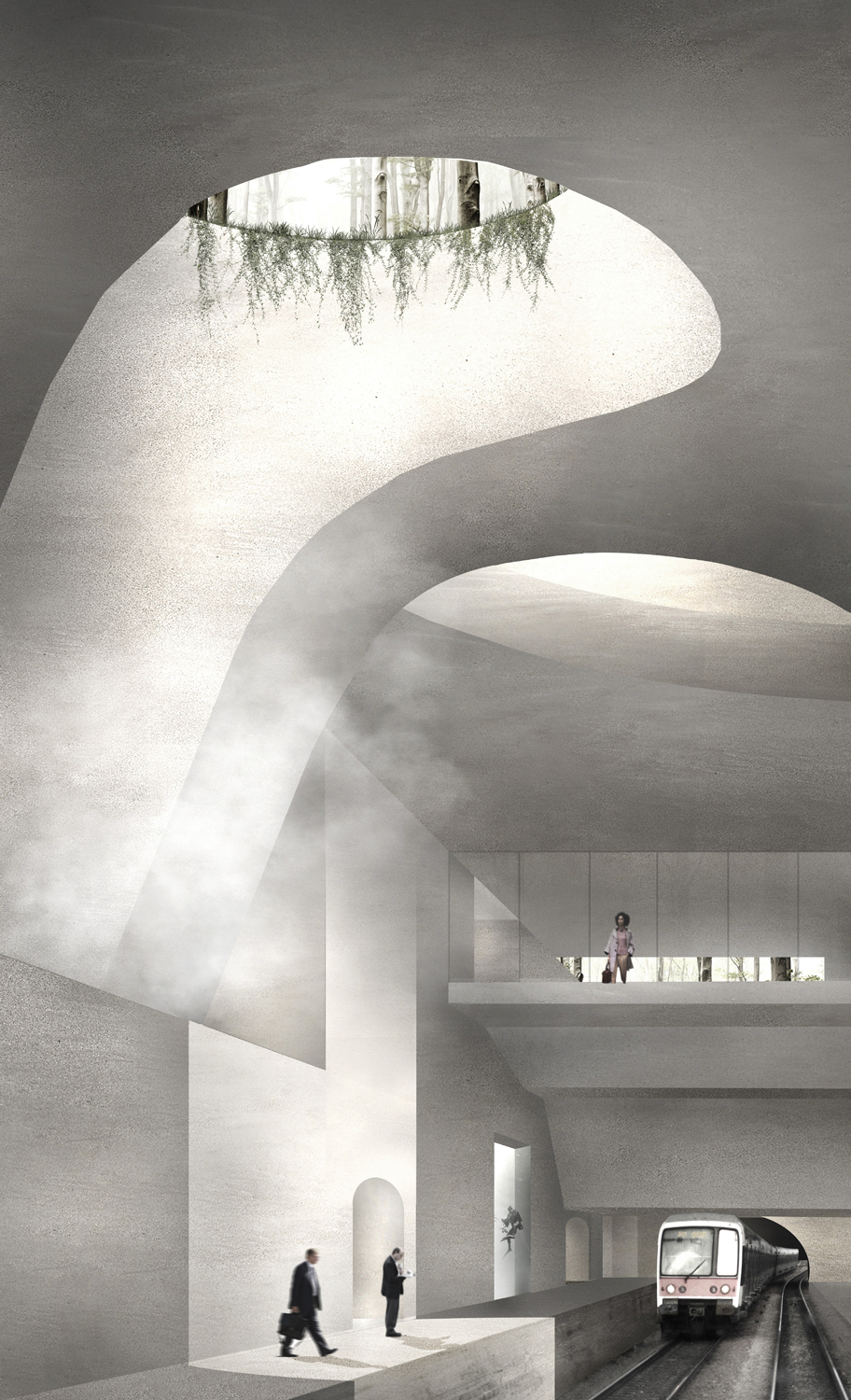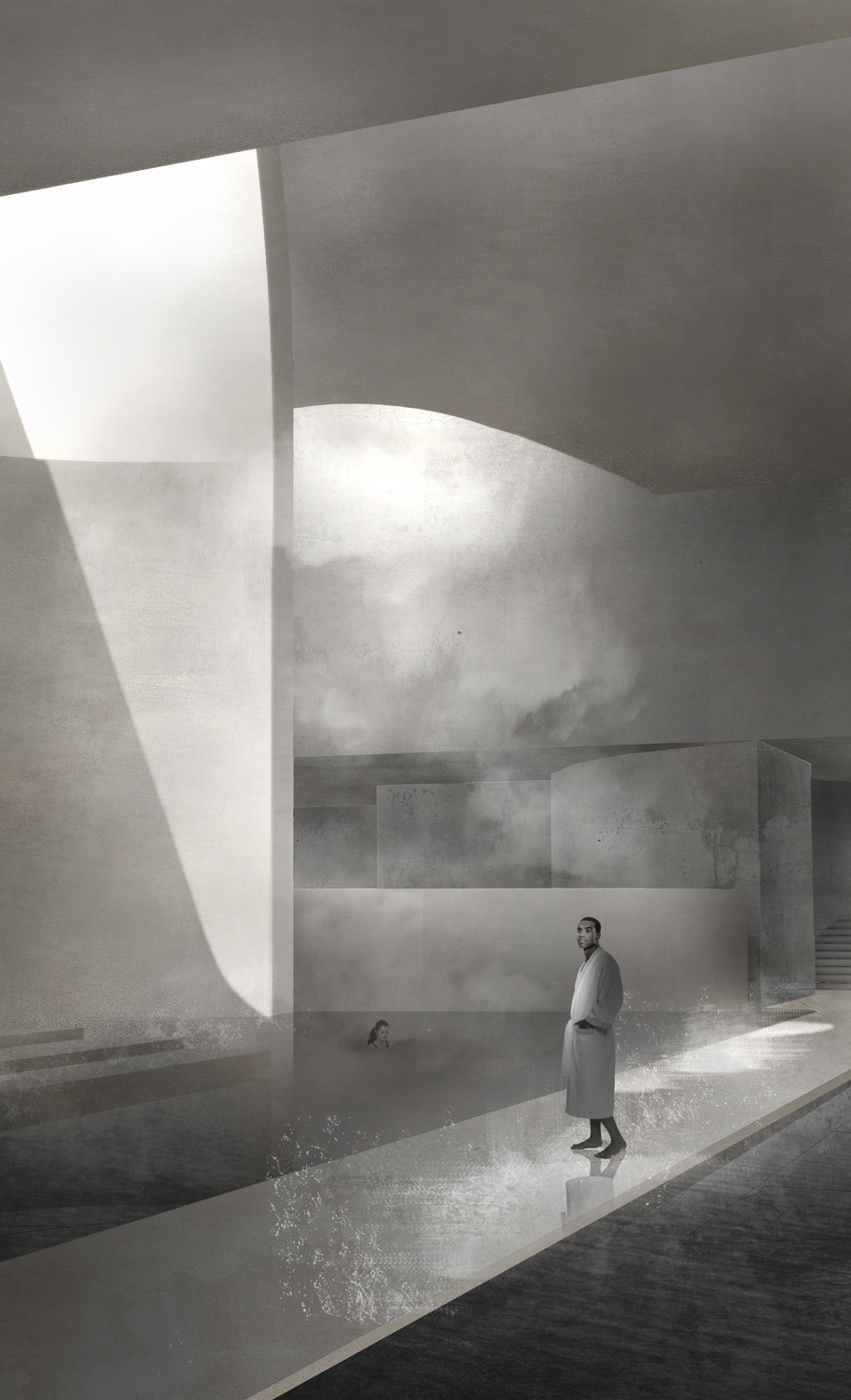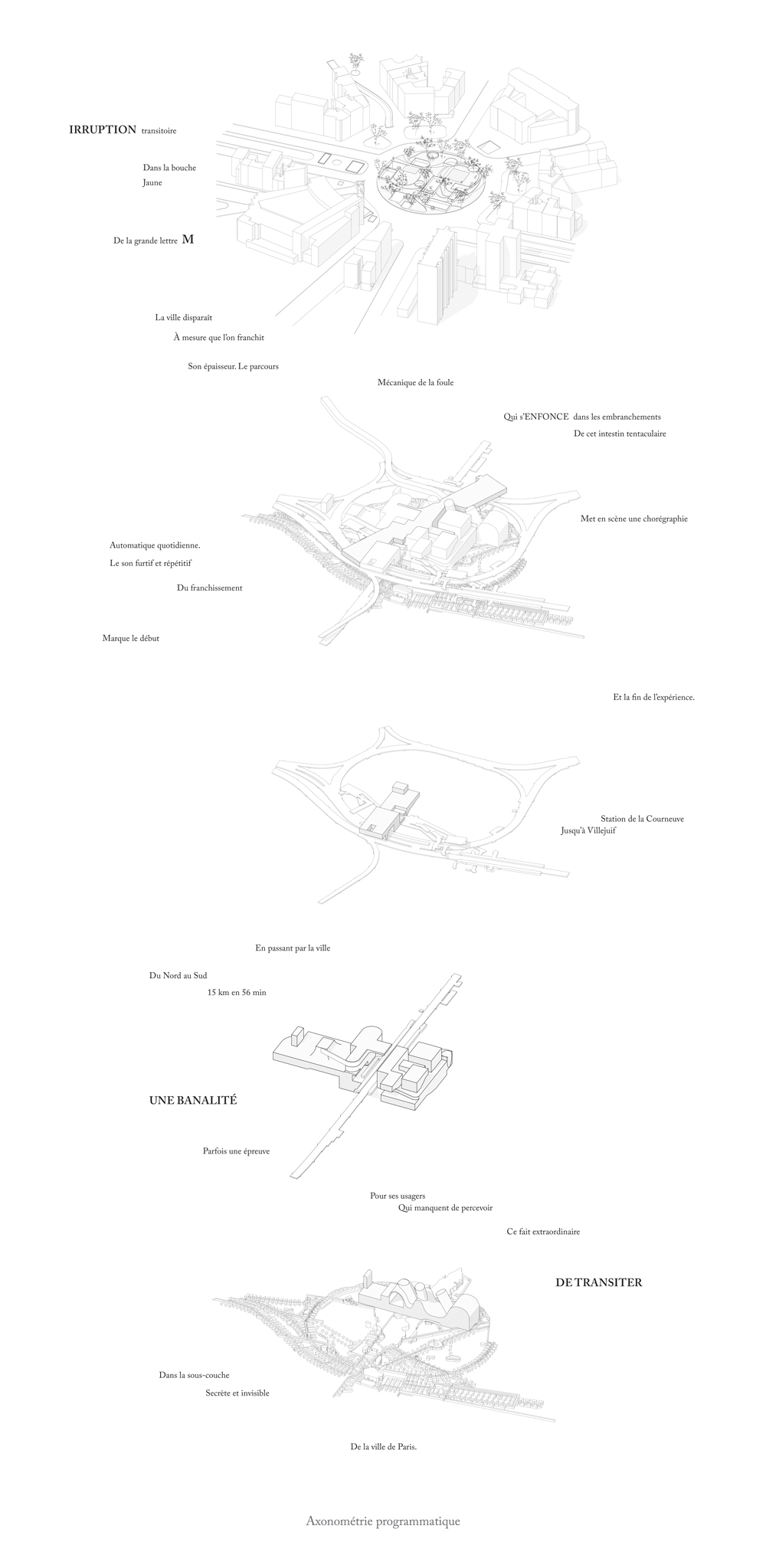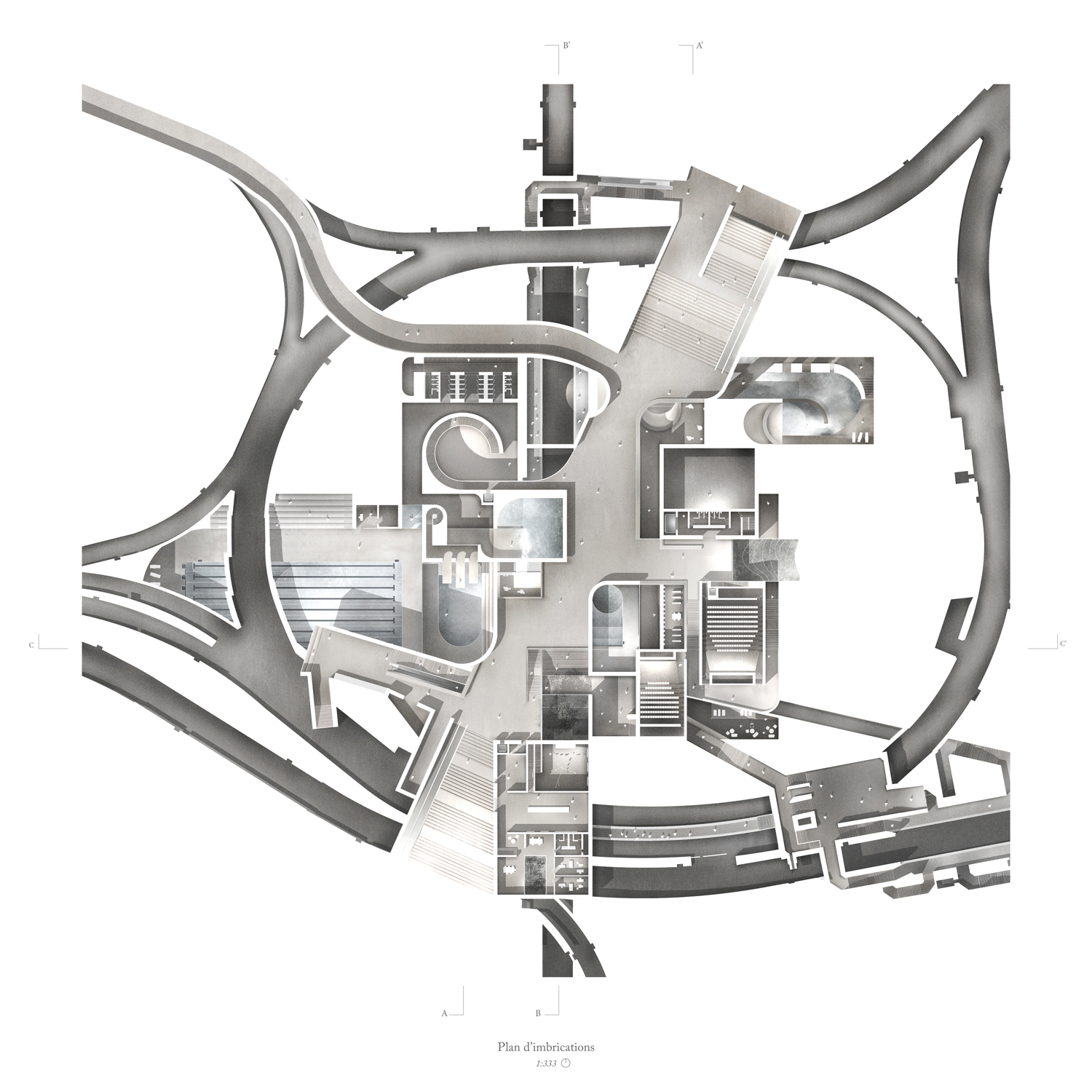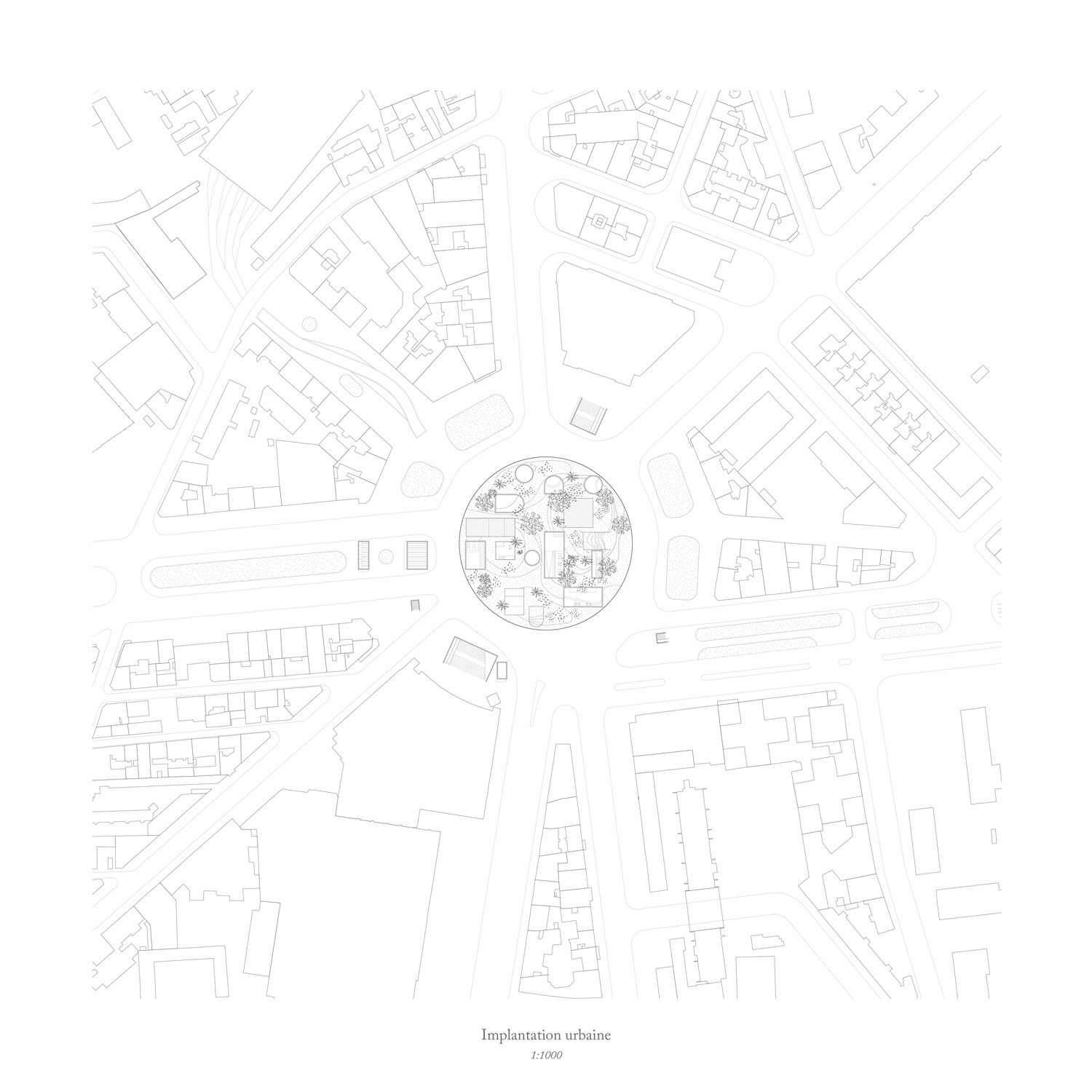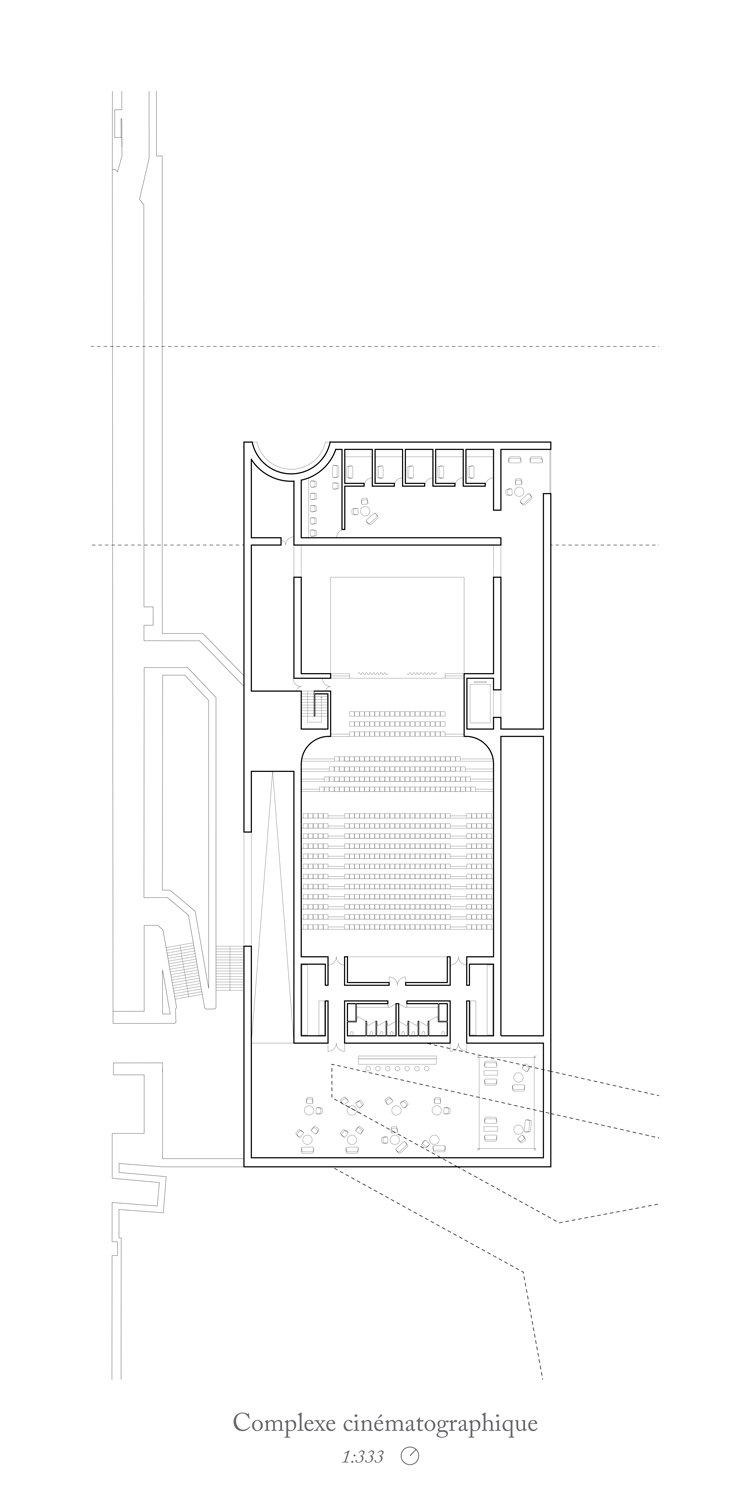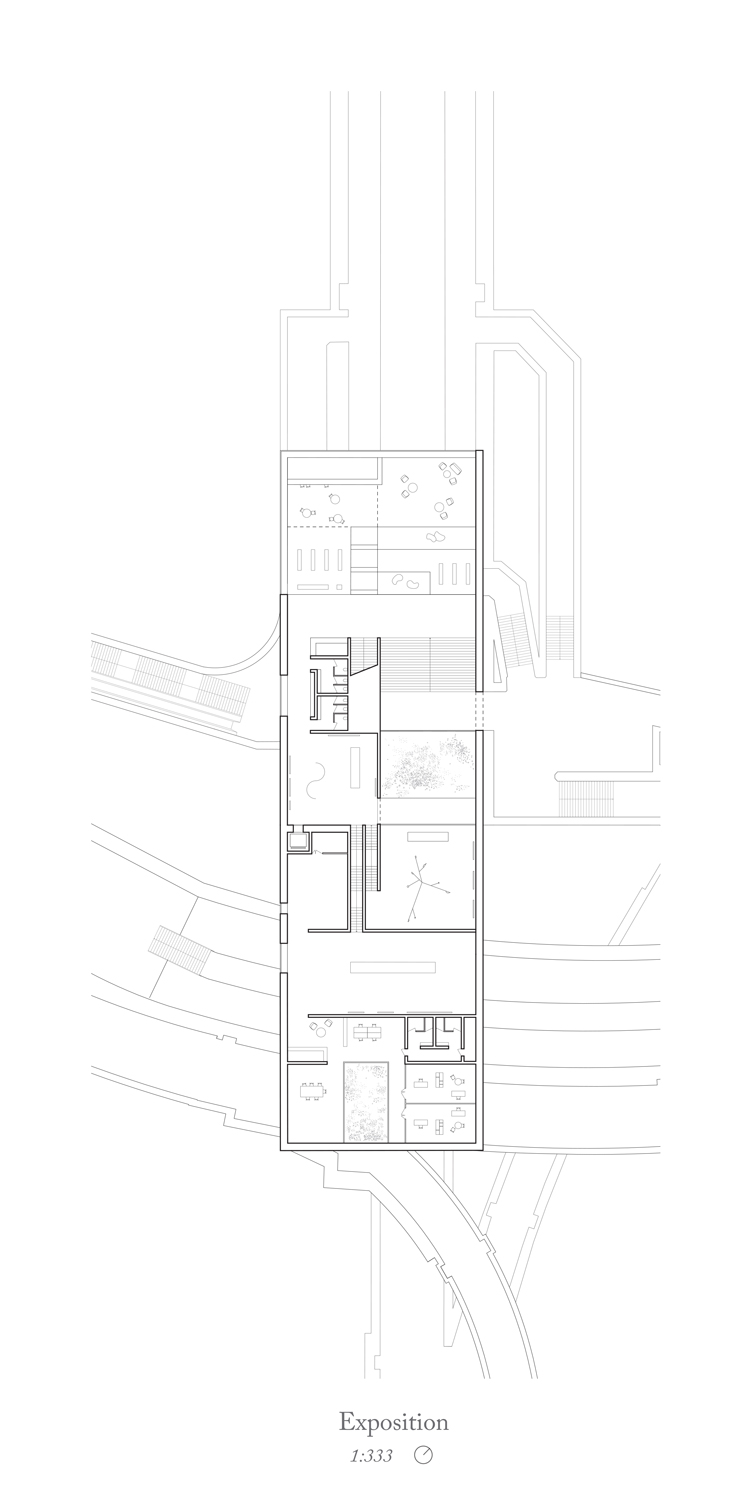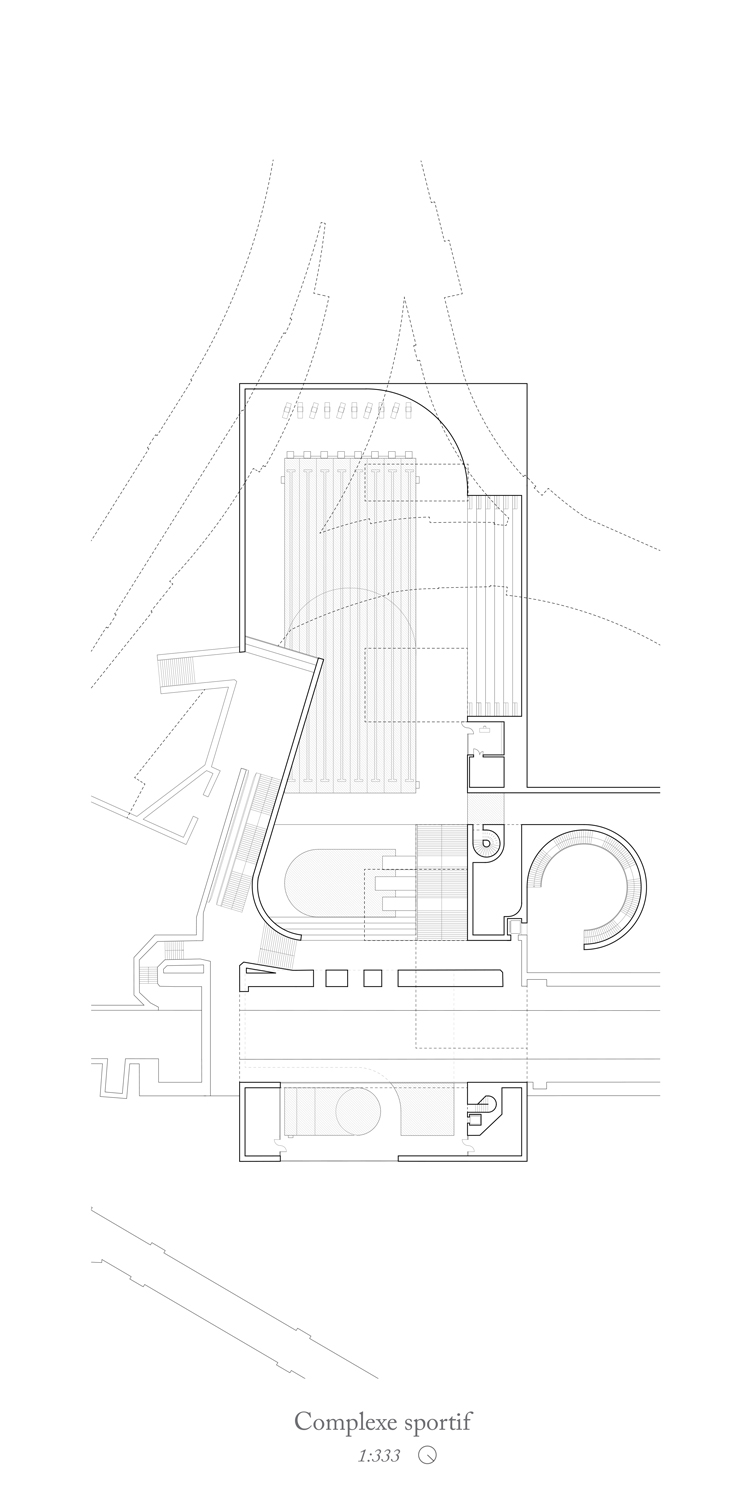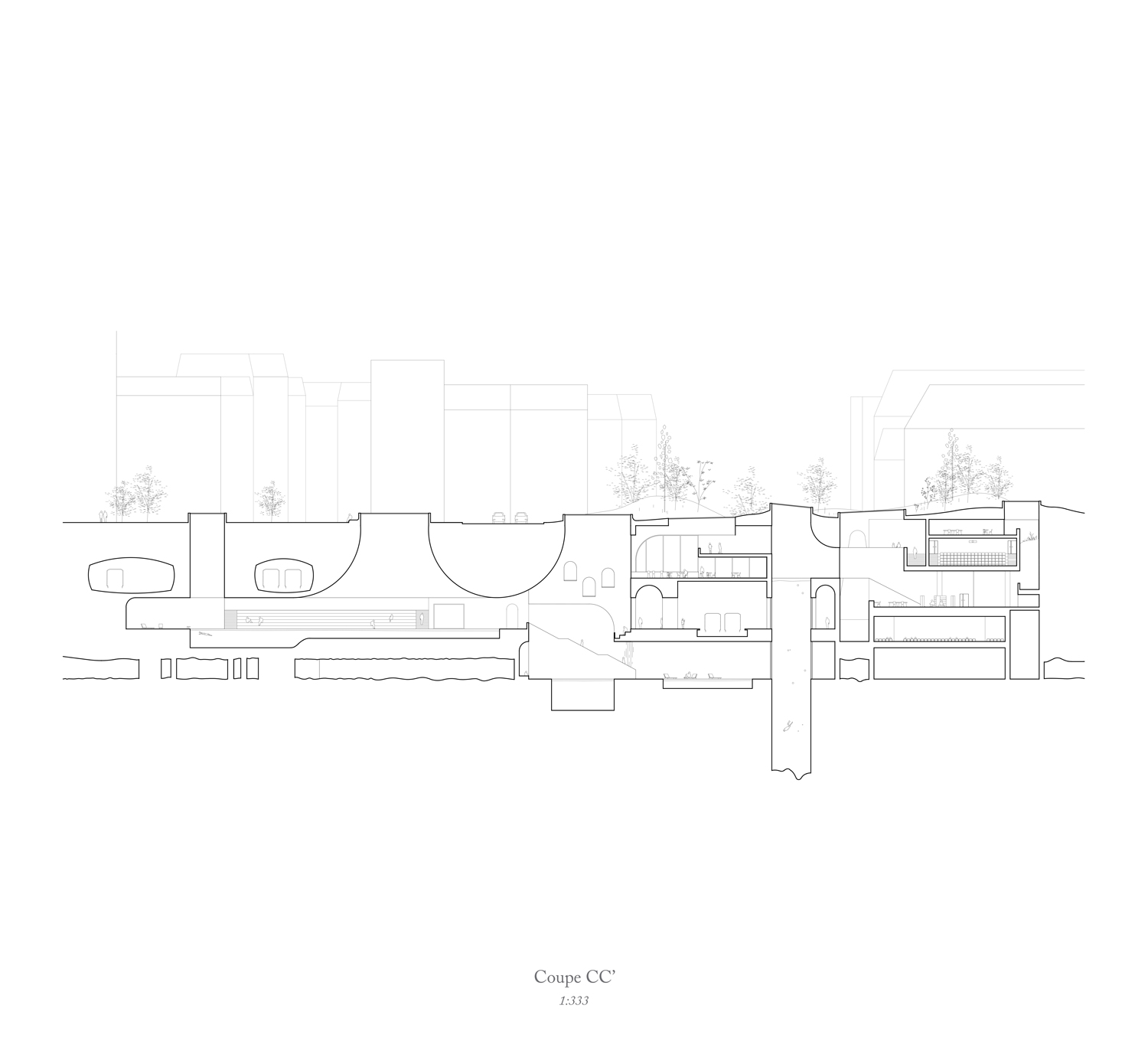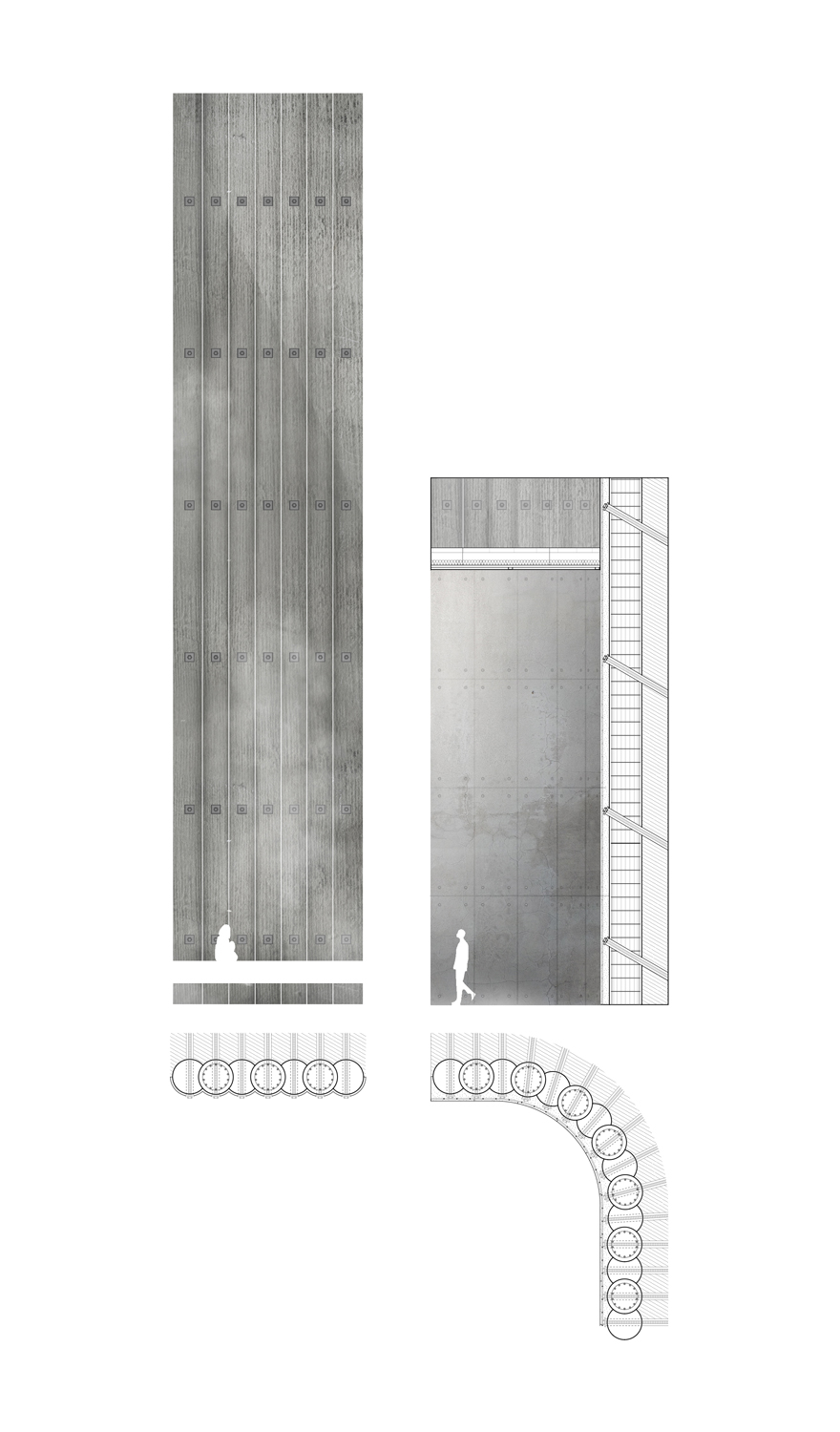☉ The crypted city is an academic project by Enzo Sessini and Aline Cousot developed in 2018. It is located in Paris France in an urban setting. Its scale is large with a surface of 25.000 sqm. Key material is concrete.
In the era of extreme densification of metropolises, the urban sprawl continues to grow to the point of representing a threat on a global scale. Indeed, galvanized by capitalism and its logics of profitability, it is illustrated by a «frantic and frightening consumption of free spaces that surround us» ¹ resulting in a gradual fragmentation of land available in cities, to the deficit of a policy of urbanization of rural areas. In the wake of this observation, the aim of this project is to re-examine these dynamics and preserve the last urban voids through new urbanization alternatives: the investigation of the basements.
As such, the city of Paris represents a relevant case study. Indeed, ranked 6th in the world’s densest cities, it maintains a special relationship to its subsoil, both overexploited by a tangle of countless infrastructural networks, but ignored in its entirety. Located in the heart of the 13th arrondissement, the Place d’Italie appears as an interface and a major issue in Paris, marked by a singular relationship to its surface (urban infrastructural node), as well as its basement (composed of three subway lines, and taking part in the second largest network of underground quarries in Paris).
The issues we have tried to answer through this project are multiple. At first, it involves recreating a connected interface: to the components of the site (forecourt, program) as well as between the different layers that compose it (urban fabric, roads, metro, quarries). Then, we wished by our intervention to qualify the temporalities at the heart of this infrastructural flow. Thus, the public character of the program (exhibition, cinema complex, sport complex, baths) directly serves this idea. It also retains the character of the parcel on which we intervene, allowing to initiate an emancipation of the pejorative imagination related to the underground by assuming and staging an interaction between program and infrastructure.
Finally, the materiality of the project seeks to blur the divisions architecture-engineering, aesthetic-functional, or crude-sophisticated, through one material: concrete. Indeed, it is the very substance of the Paris metropolitan network and underground structures, making its use an obvious one. Its sonic, thermal and structural performances support this choice, distinguished by a device of engineering secant piles, adaptable to any kind of soil and depth. The durability of the material is supported by the « in situ » supply of its components, taking advantage of the aggregates generated by the partial excavation of the square.
So, rather than agreeing to the founding role of infrastructure in relation to the city, this intervention attempts to instil another vision of the underground, in the idea that one day perhaps, their practice will not be undergone, but desired.

